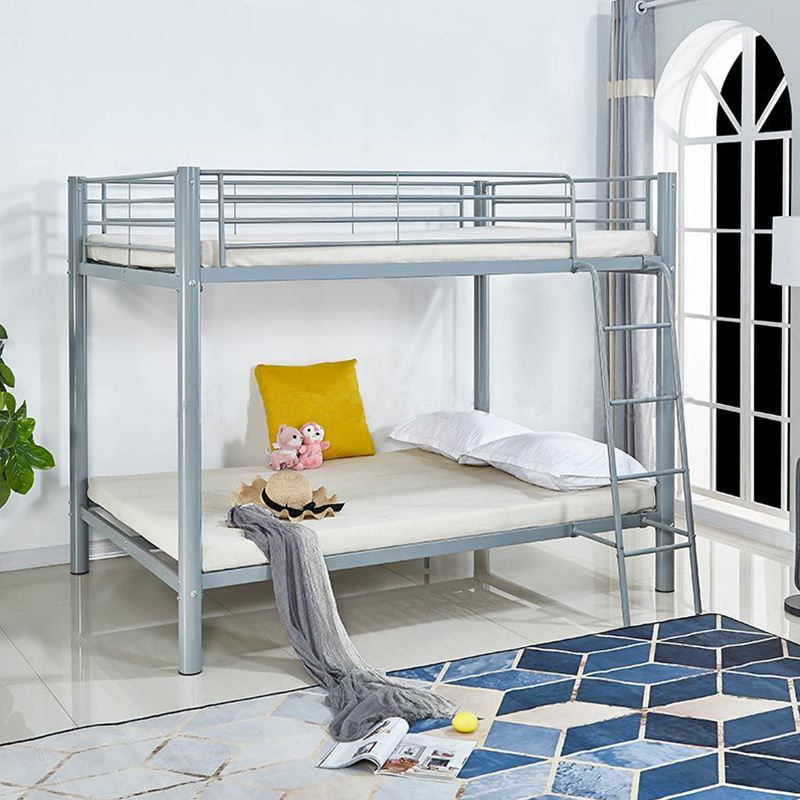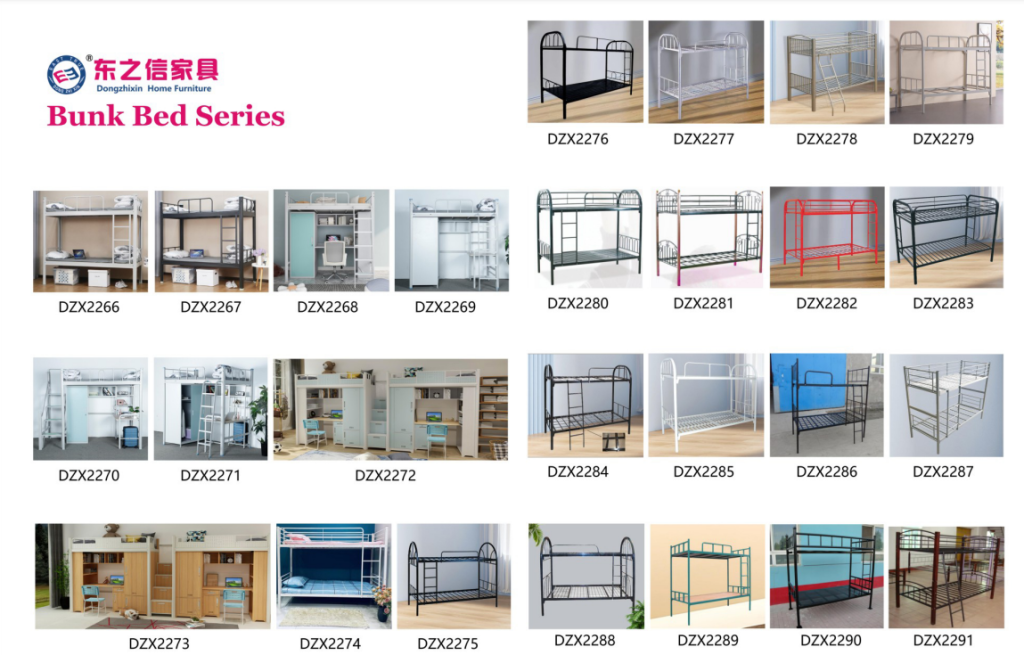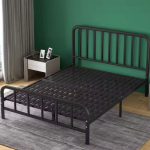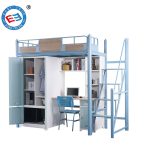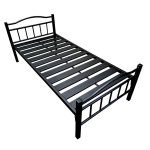Steel bunk beds are commonly found in homes, dormitories, and some commercial spaces due to their durability and space-saving design. However, understanding the weight capacity of a steel bunk bed is crucial when purchasing one. The weight capacity depends not only on the structure and design of the bed frame but also on several other factors. In this article, we will explore the weight capacity of steel bunk beds, the factors that affect it, and provide reference information for different sizes and uses of bunk beds.

Factors Affecting Weight Capacity
1. Material Quality
Type of Steel: The weight capacity of a steel bunk bed is closely related to the quality of the steel used. High-quality steel can typically withstand more weight, while low-quality steel may bend or deform under pressure.
Thickness of Steel: Thicker steel bars provide more support, thus increasing the bed frame's weight capacity.
2. Design and Structure
Support Structure: The design and support structure of the bed frame significantly affect its weight capacity. Some bed frames are designed with reinforced support bars and additional support legs to enhance weight capacity.
Bed Frame Size: The design of bunk beds varies with size. Larger frames typically have a stronger weight capacity because they provide more support points.
3. Mattress and User Weight
Type of Mattress: The type and weight of the mattress affect the weight capacity of the bed frame. For example, spring mattresses tend to be heavier than memory foam mattresses, which increases the load on the bed frame.
User Weight: The weight of the users also affects the bed's load. Generally, adult users require a higher weight capacity compared to children.
4. Number of Bed Levels
Top Bunk: The top bunk typically has a lower weight capacity due to its lighter design. For safety reasons, it's advisable not to exceed the recommended weight limit for the top bunk.
Bottom Bunk: The bottom bunk can usually hold more weight because of its sturdier design and stronger support structure.
Weight Limits
The following table provides reference weight limits for commonly used adult and children’s steel bunk beds of different sizes:
| Bed Type | Bed Size | Weight Limit (Single Bed) | Weight Limit (Bunk Bed) |
|---|---|---|---|
| Adult Bunk Bed | Single (90x190cm) | 100-150 kg | 200-250 kg |
| Double (135x190cm) | 100-150 kg | 200-250 kg | |
| King (150x200cm) | 200-250 kg | 250-300 kg | |
| Children’s Bunk Bed | Single (90x190cm) | 80-100 kg | 150-200 kg |
| Double (135x190cm) | 80-100 kg | 150-200 kg |
Note: Weight limits may vary depending on the brand and design, so refer to the manufacturer's specifications for exact details.
Usage Guidelines
1. Avoid Overloading Always adhere to the maximum weight limit specified for the bunk bed. Exceeding the weight limit could cause the bed frame to bend or even collapse, posing a safety risk.
2. Regular Inspections To ensure the longevity of a steel bunk bed, it is recommended to regularly inspect the frame's connection points, support bars, and support legs. Any loose parts or damaged support bars may affect the bed's weight capacity.
3. Proper Mattress Selection Choose a mattress that is compatible with the bed frame’s weight capacity. A heavier mattress may cause the frame to bear more weight, which could impact its stability.
4. Appropriate Usage The top bunk is typically designed for lighter users, especially children. Adults using the top bunk could exceed its weight limit, leading to an unsafe situation.
Frequently Asked Questions:
1. Can children use an adult bunk bed?
Children can use adult bunk beds, but it’s important to ensure that the bed's size, mattress, and structure are suitable for children's needs. Typically, children’s bunk beds have lower weight limits, so choosing the appropriate bed based on the child’s weight is essential.
2. Why do weight capacities differ between beds?
The weight capacity of a bed depends on several factors, including the bed's size, material quality, design, and mattress weight. The higher the quality of the frame, the greater its weight capacity.
3. How can I extend the lifespan of a steel bunk bed?
Regularly inspect and maintain the bed, ensuring that support bars and frame connections are secure and undamaged. Avoid overloading the bed and choose a mattress that matches the frame's weight capacity to extend its lifespan.
4. How can I know if my steel bunk bed is safe?
Ensure that there are no loose parts or visible damage to the frame, avoid exceeding the weight limits, and regularly check the mattress and bed frame compatibility. Following the manufacturer’s weight limits ensures safe use.
Conclusion
Steel bunk beds are durable and long-lasting furniture, but several factors influence each bed's weight capacity. When purchasing a steel bunk bed, it’s essential to understand the bed's design, material, and weight limits. By selecting the right mattress, maintaining the bed frame, and avoiding overloading, you can ensure your steel bunk bed's long-term safety and functionality. We hope this article helps you better understand the weight capacity of steel bunk beds and aids you in making the best choice for your needs.


